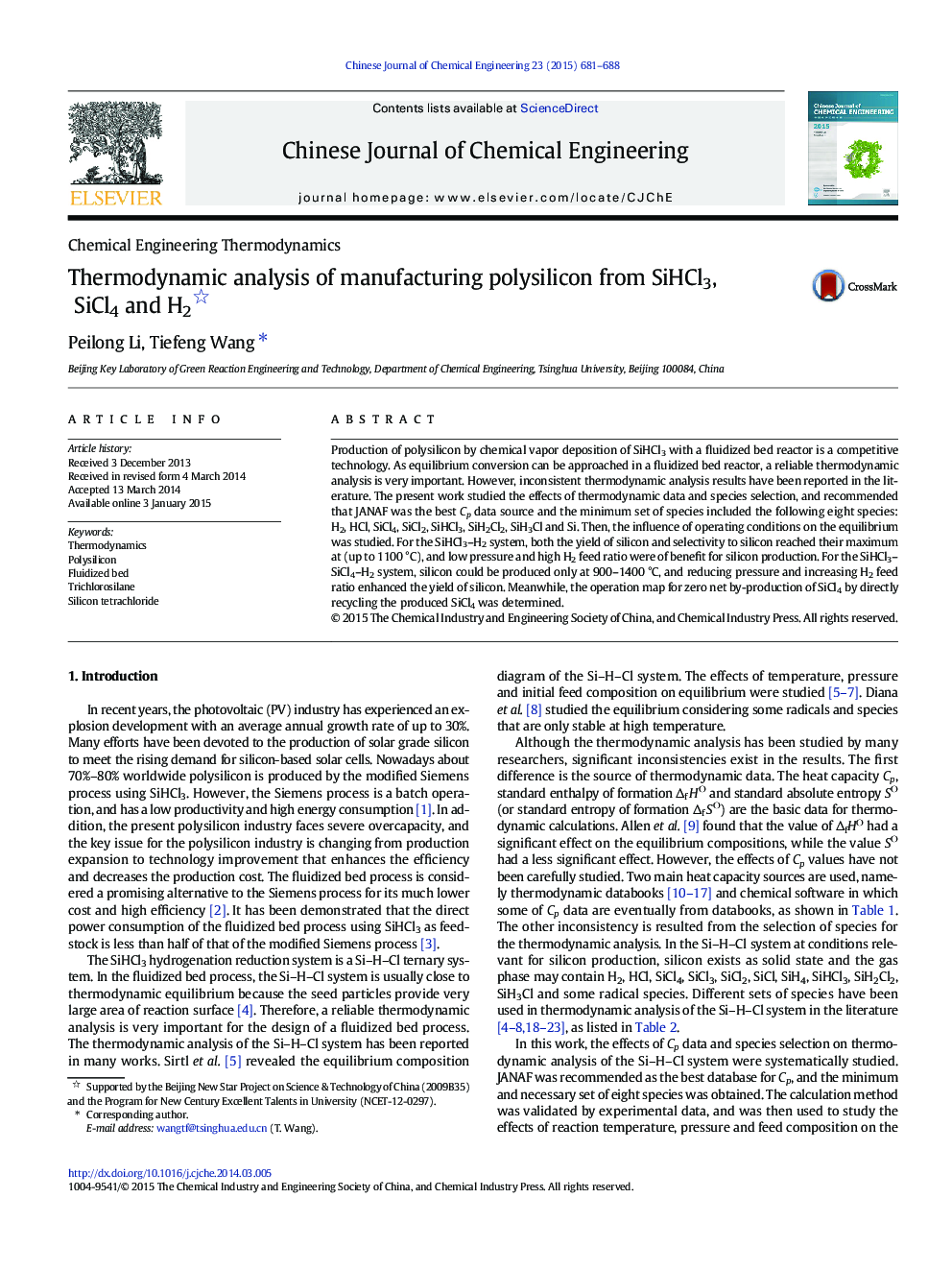| کد مقاله | کد نشریه | سال انتشار | مقاله انگلیسی | نسخه تمام متن |
|---|---|---|---|---|
| 168096 | 1423401 | 2015 | 8 صفحه PDF | دانلود رایگان |

Production of polysilicon by chemical vapor deposition of SiHCl3 with a fluidized bed reactor is a competitive technology. As equilibrium conversion can be approached in a fluidized bed reactor, a reliable thermodynamic analysis is very important. However, inconsistent thermodynamic analysis results have been reported in the literature. The present work studied the effects of thermodynamic data and species selection, and recommended that JANAF was the best Cp data source and the minimum set of species included the following eight species: H2, HCl, SiCl4, SiCl2, SiHCl3, SiH2Cl2, SiH3Cl and Si. Then, the influence of operating conditions on the equilibrium was studied. For the SiHCl3–H2 system, both the yield of silicon and selectivity to silicon reached their maximum at (up to 1100 °C), and low pressure and high H2 feed ratio were of benefit for silicon production. For the SiHCl3–SiCl4–H2 system, silicon could be produced only at 900–1400 °C, and reducing pressure and increasing H2 feed ratio enhanced the yield of silicon. Meanwhile, the operation map for zero net by-production of SiCl4 by directly recycling the produced SiCl4 was determined.
Graphical AbstractThermodynamic studies of the Si–H–Cl system are important for the polysilicon production in a fluidized bed reactor (FBR) because equilibrium conversion can be approached in an FBR. The present work showed that JANAF was the best thermodynamic data source and the minimum set of species included the following eight species: H2, HCl, SiCl4, SiCl2, SiHCl3, SiH2Cl2, SiH3Cl and Si. With the determined settings for thermodynamic analysis, the effects of reaction conditions were studied. Zero net by-production of SiCl4 was realized by directly recycling the produced SiCl4, and a regime map of SiCl4 by-production was obtained to guide the optimum operation.Figure optionsDownload as PowerPoint slide
Journal: Chinese Journal of Chemical Engineering - Volume 23, Issue 4, April 2015, Pages 681–688